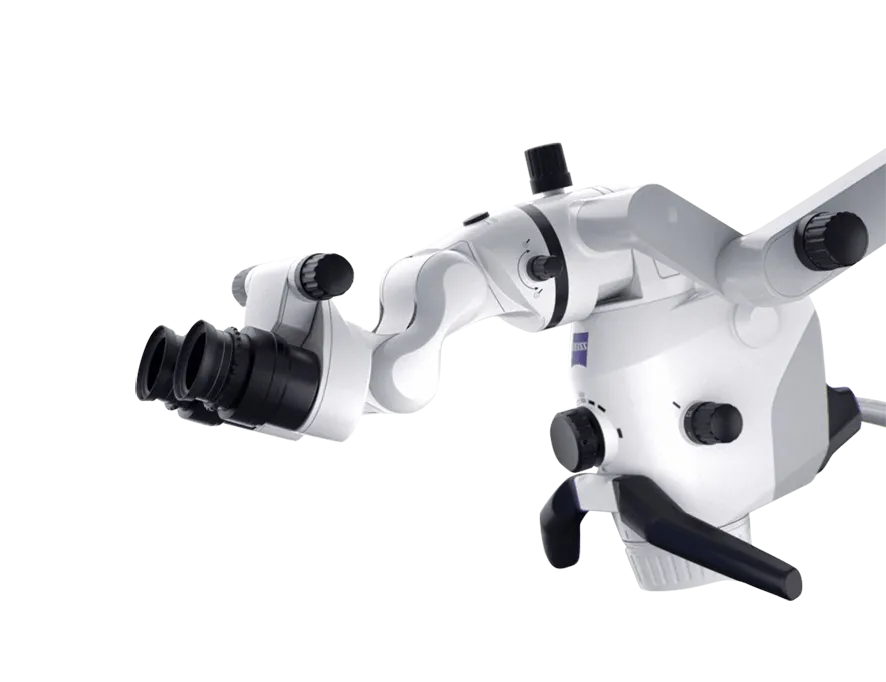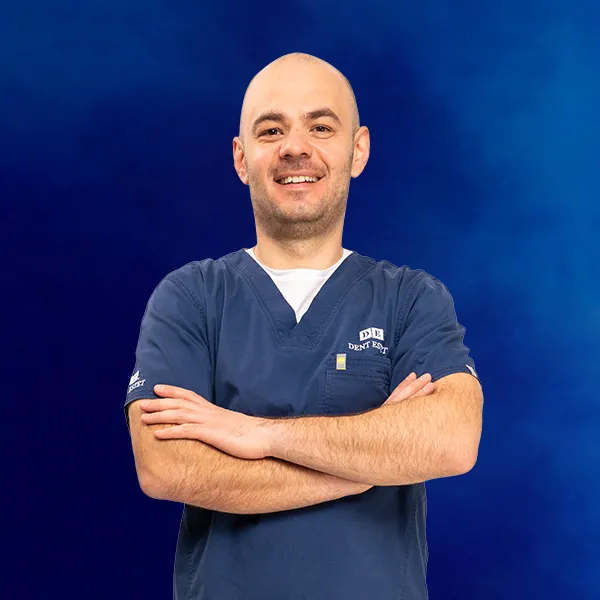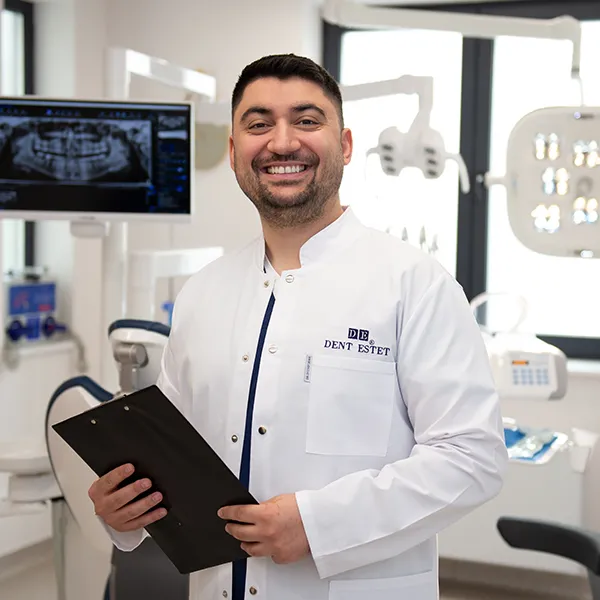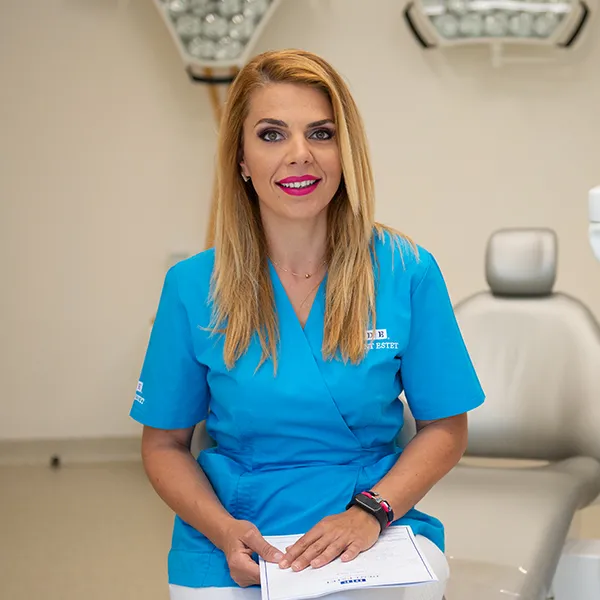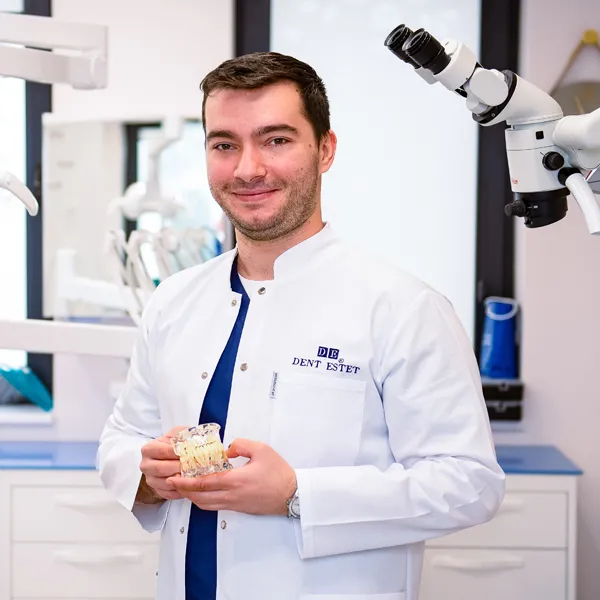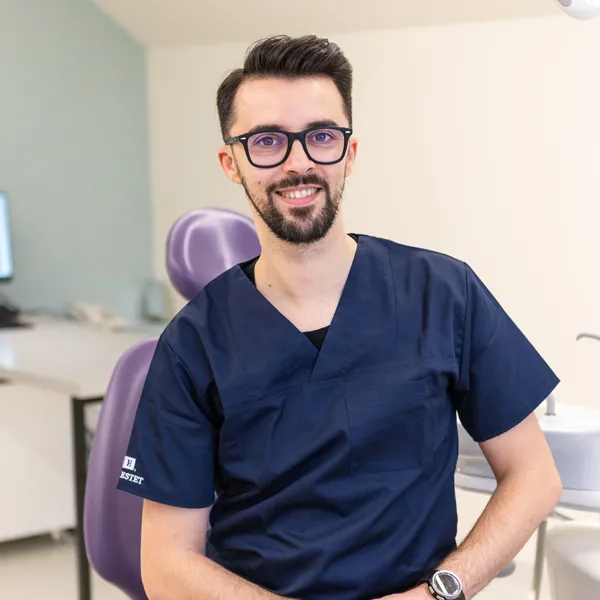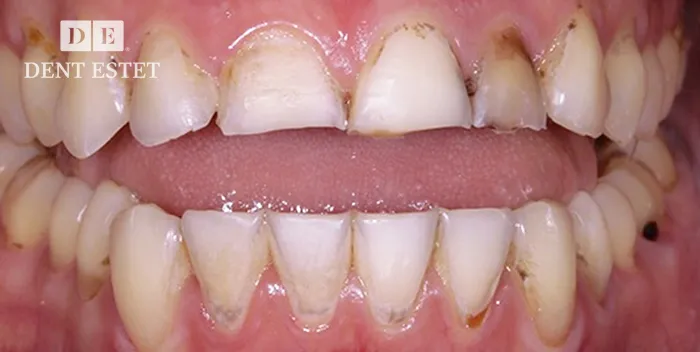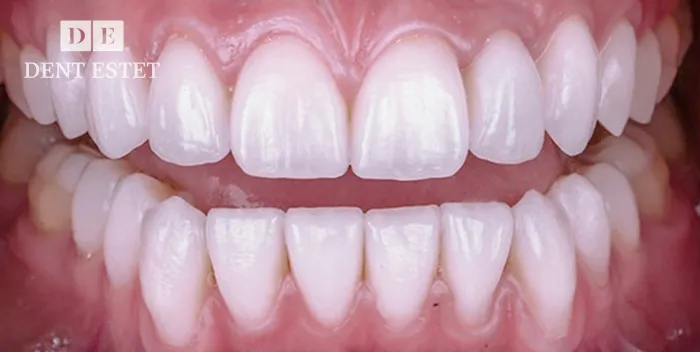Professional Treatment
At DENT ESTET, the endodontic interventions are performed exclusively with the help of the dental microscope by doctors with international specialization and over 21 years of experience.
The endodontic treatment, which involves a root canal obturation procedure, is considered a conservative dental treatment because it aims to treat a dental infection or a deep cavity while keeping as much of the integrity of the natural tooth.
The endodontic intervention performed with dental microscope can make the difference between saving a tooth or removing it.

The benefits of endodontic treatment
-
Accurate Diagnosis
Even in the cases where the tooth presents microfractures and longitudinal fractures that are impossible to identify based only on the digital X-Ray, this procedure ensures an accurate diagnosis.Just by discovering the exact cause, you can benefit from the right treatment with long-term results.
-
The Correct and Complete Treatment of the Root Canal
-
Faster Recovery Process
As part of the microscope assisted surgical intervention in the endodontic conservative therapy, the soft tissues are less traumatized, the suturing methods are more efficient and the recovery is faster.
-
Efficiency of the Treatment Period and Financial Investment
Endodontic treatments, caused by the incorrect execution of the previous dental work of cleaning the tooth canals, often come with higher costs. The endodontic therapy assisted by the microscope guarantees maximum accuracy and efficiency, so the treatment duration is shorter and the result is secured for a long period of time.
Deep or large tooth decay
Trauma to the teeth
Periodontal affections
Bacteria that penetrate through the tooth fissures gradually destroy the dental pulp, facilitating the installing of the infection, causing the destabilization of the tooth in the bone and, in the end, causing tooth loss.
The greatest risk in the case of untreated cavity is that the inflammation or necrosis of the dental pulp can extend to neighbouring teeth.
What are the steps of the endodontic treatment (root canal obturation)?
• Complete elimination of the infection from the canal
• Cleaning and decontamination of the treated area
• Protecting the tooth by sealing it with an Emax or Zirconia dental crown
At the end of the intervention you will not feel local pain because the nerve tissue has been removed and the infection completely eliminated. Also, the tooth will be strengthened with the help of a prosthetic work (dental crown) that will take over the masticatory forces and natural function.
Pain (spontaneous, pulsatile, dull) which extends or not to the neighbouring areas of the maxilla.
Sensitivity when biting or chewing, or at high and low temperatures.
Recurrence of pain in a tooth treated in the past
Tooth discoloration or black teeth
The appearance of a swelling near the tooth
Swollen lymph nodes around the neck and head
How is endodontic treatment performed with the endodontic microscope?
Root canal obturation is an extremely accurate procedure that must be performed in a bacteria-free environment. Therefore, the tooth is isolated with a working field.
Subsequently, the canals are discovered, they are cleaned with a special solution compatible with the biological material of the patients and then the doctor performs the laborious activity of cleaning each canal with great precision and with the help of the microscope. This increases the specialist's field of vision during the procedure.
To make sure that the canals have been completely cleaned, the endodontist also calls for digital X-rays. The final step, after the tooth has been properly treated and the infection has been eliminated, is to provide stability again to the tooth by reconstructing it with the help of a prosthetic work.
After the treatment is completed, the patient will follow the dietary, dental hygiene and drugs recommended by the doctor.
Is endodontic treatment painful?
Usually, the patient doesn't feel any discomfort or pain during the treatment canal procedure because the doctor uses a local anaesthetic to ensure the patient's comfort. However, depending on the biological material, there are cases when patients experience a certain local sensitivity post-intervention, which can be controlled with medication recommended by the coordinating doctor.









